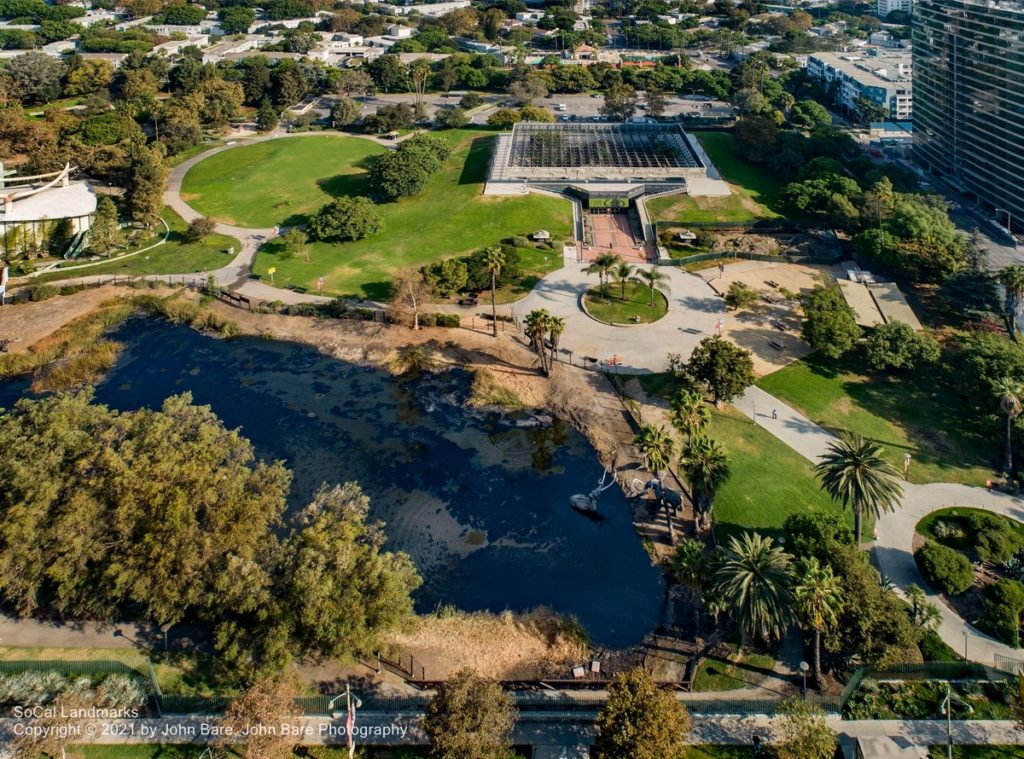La Brea Tar Pits
Natural asphalt (brea in Spanish) has seeped up from the ground in the Hancock Park area of Los Angeles for millennia. Spanish explorers led by Gaspar de Portolá made the first written record of the tar pits in 1769. The 4,439-acre Rancho La Brea was granted to Antonio José Rocha and Nemisio Dominguez in 1828. In 1860, Antonio’s son, José Jorge Rocha, deeded the rancho to Henry Hancock who developed the tar deposits commercially. Prof. William Denton recognized animal remains in the tar as fossils in 1875. L.A. High teacher James Gilbert began the first large excavation project in 1909. The George C. Page Museum, dedicated to researching the tar pits and displaying specimens from the animals that died there, opened to the public in 1977. The La Brea Tar Pits are a California Historical Landmark and U.S. National Natural Landmark.
Los Angeles, Los Angeles County
Images by John Bare and Andrew Schmidt

